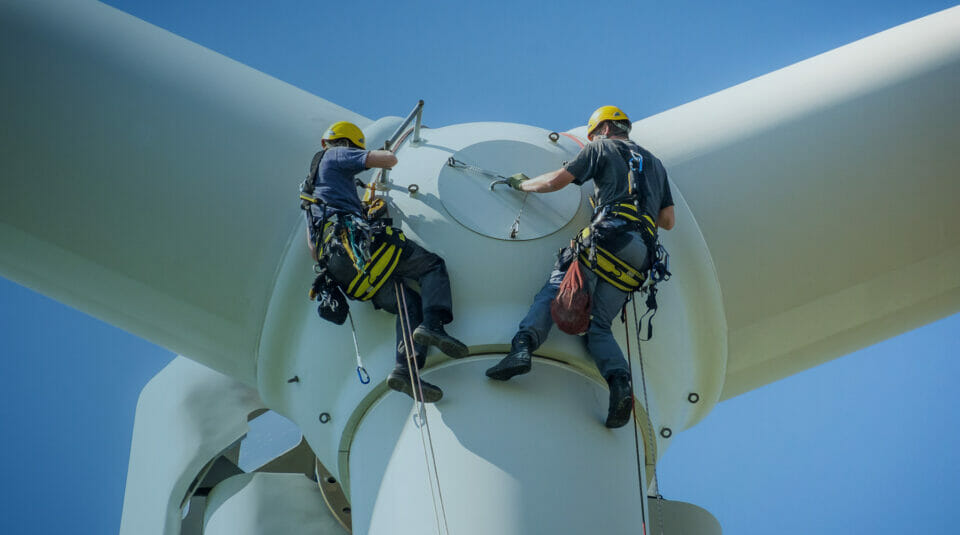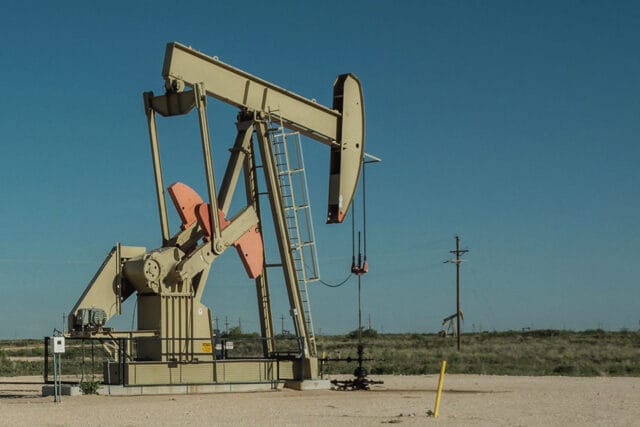
6 Safety Trends to Increase Worker Safety for Renewable Energy Jobs
As the desire for renewable energy increases and the demands on your team grow, your dedication to worker safety remains critical. Learn six safety management trends to help solar, wind, storage, biomass, geothermal, waste-to-energy, and hydro power providers optimize their third-party contractor operations.

As renewable energy use continues to grow across North America, skilled workers in these disciplines remain in high demand.
In fact, wind turbine technicians and solar photovoltaic installers are two of the top three fastest-growing occupations, according to the U.S. Bureau of Labor Statistics. Their job is also considered the second most dangerous, with 30 to 50 workers in every 100,000 killed each year.
Prioritizing safety measures is crucial. From electric linemen to wind turbine technicians, hazards across the industry include falls, electrocution, heavy equipment accidents, and exposure to noxious fumes.
To increase worker safety, renewable energy companies can focus on these 6 safety management trends:
1. Perform a safety audit to reveal weak spots in your operations.
Conducting regular worksite safety audits is the most comprehensive way to gauge the effectiveness of your safety programs and practices. In addition to ensuring that a company remains compliant with local, state and federal legislation, safety audits can help identify and correct oversights that could, if left unchecked, lead to costly workplace injuries or fatalities.
2. Conduct industry and site-specific training.
Every employee should complete job-specific training requirements prior to using renewable energy equipment and machinery, such as working at heights, manual handling, fire awareness and first aid. The right training helps companies close the gaps that lead to incidents. It’s important to ensure all active employees maintain up-to-date certification in each of the above-mentioned areas of service.
3. Inspect and maintain equipment.
From routine inspections of heavy machinery to regular maintenance to prevent catastrophic problems that may be more likely to cause injuries, it is important for companies to pursue the necessary measures for safety and maintain detailed documentation. Rigorous site safety management and documenting health and safety management measures via a risk management platform can facilitate equipment upkeep.
4. Wear proper equipment.
Employers must reinforce their Personal Protective Equipment (PPE) policies on the use of effective standard safety gear such as helmets, eye and ear protection, footwear and gloves with employees. Use team safety meetings and huddles as a time to call this out and make sure employees are compliant.
Next-generation PPE is recommended for all field workers on renewable energy sites. Companies can invest in fall detection and arrest systems for working at heights and other solutions for promoting safety in confined spaces or noisy worksites. Smart sensors can detect dangers posed by machinery or track biometric data to allow for more rapid incident responses.
5. Streamline safety incident reporting.
Reporting and report accuracy can improve through a combination of field devices and cloud-based software – especially when an accident or incident occurs. Look for a solution that also tracks incidents to monitor safety trends and improve risk management measures across your team. A solution that has predictive capabilities will allow businesses to move from being reactive to proactive when assessing contractor risk, by ranking a contractor’s future risk of having an incident on site.
6. Establish industry-wide standards.
Collaborative agreements on best practices have emerged in renewable energy sectors. Independent organizations such as the Global Wind Organization and Solar Energy Industries Association have developed industry-specific guidelines. Adhering to agreed-upon standards is a best practice for companies to pursue compliance and to promote safe working conditions. When companies connect to the grid in the U.S., for instance, local, state, and federal requirements may begin to apply. In this instance, meeting federal Occupational Safety and Health Administration (OSHA) Electrical Power Generation standards is required. Initiating compliance based on the best available standards for a particular type of renewable power is a critical step toward safer operation.




